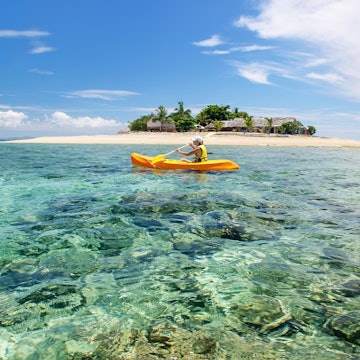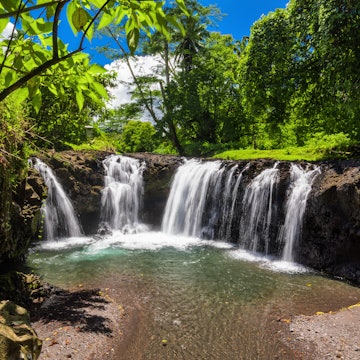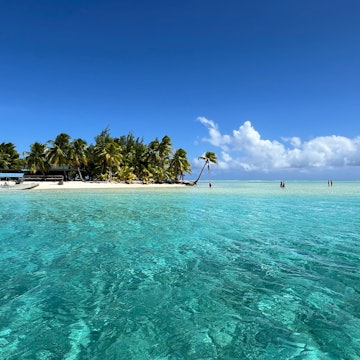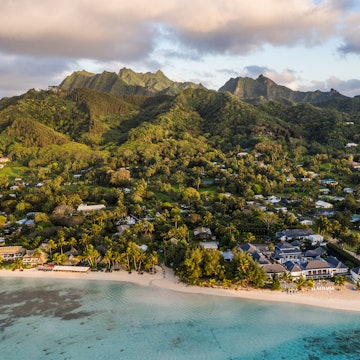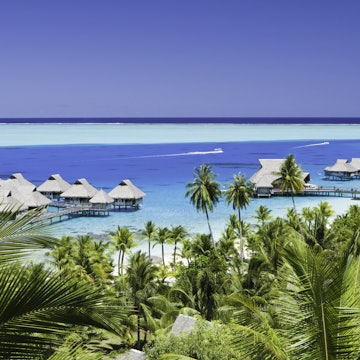
6 of the best islands to visit in Vanuatu
Supported by

Jul 26, 2024 • 8 min read

Here are the best islands to visit in Vanuatu.
Vanuatu may be frequently overlooked in favor of its more famous eastern South Pacific neighbor, Fiji, but a wallflower it’s not. With its warm waters, colorful Melanesia culture, active volcanoes and impossibly blue swimming holes, there are plenty of ways to sink into this nation's laid-back island vibes.
But you’ll also be spoilt for choice: Vanuatu is home to over 80 idyllic islands embedded like emeralds over a total area of 12,189 sq km (4706 sq miles). Many are difficult to access, which only adds to the sense of adventure. Most visitors choose to base themselves on the island of Efate – home to the country’s capital city, Port Vila – and select one of the outlying islands to experience life with kastom (traditional) tribes.
While it's possible to travel between Vanuatu's islands by boat, it can be time-consuming. Instead, most visitors travel by plane, which fly to most major islands daily, including the country's national airline, Air Vanuatu, and Unity Airlines.
Plan your vacation to Vanuatu with this guide to the archipelago's most accessible islands and the best things to do there.
Vanuatu is one of the best countries to visit next year. See our full list of Best in Travel 2025 winners.

1. Efate
Best island for market shopping
Set your clock and expectations to “island time” as you arrive on the island of Efate, and everything will be just fine in this laconic locale. Home to the country's capital, Port Vila, Efate is the country's most populous island and where most visitors land upon arrival, either by plane or cruise ship.
It's also well known for its markets and there are several places to part with your Vatu (Vanuatu’s currency) and support the local economy here. Stretching along the harbor front, you’ll find a shaded marketplace – locally called the Mama’s Market – where women in floral island dresses peddle homemade wares such as earrings, sarongs and sturdy handwoven baskets.
A short amble further along the waterfront and you’ll hear the cacophony of the Port Vila Central Markets, where producers gather to sell seasonal tropical fruit and vegetables, including varieties of yams (so beloved they're featured on the local currency). Grab a fresh coconut juice (around 100VT) and wander to witness the spectacle or stop to sample laplap, Vanuatu's national dish. It's typically made with a paste of grated yams or bananas, meat and coconut cream, which is then wrapped in banana leaves to cook.
Local tip: Haggling isn’t done in markets here. Prices are clearly marked and payment is expected in Vatu. Arrive early for the best produce and bring your own fabric bag (plastic is frowned upon).

2. Espiritu Santo
Best place to swim in natural springs
Toasty tropical weather year-round makes Vanuatu the ideal destination for beach holidays. That's what makes the country's largest island, Espiritu Santo (usually called just “Santo”), so popular. It caters particularly well to families, with a good selection of accommodations including resorts, beachfront bungalows and guesthouses.
While Santo is renowned for its diving (the SS President Coolidge, considered one of the world's most accessible shipwrecks, is found off its shores) and white-sand beaches, it's also home to beautiful blue holes. These natural springs, filtered through underground limestone caverns, are a brilliant color thanks to their depth, purity and mineral content.
Nanda Blue Hole, with its 20m-deep (66ft) swimming pool, is the ideal spot to snorkel. Fish below make you feel like you’re out on a reef and it’s cool in every sense of the word. Afterwards, sun yourself on a timber deck with a cold Tusker beer from a small cafe operated by the same family who own this property.
Accessible via 4WD or even better, kayak, a swinging rope into Santo’s largest swimming hole at Matevulu Blue Hole makes the 45-minute paddle here worth every minute. It's a 30-minute car ride to Riri Blue Hole, but why drive when you can arrive via outrigger canoe? Like Matevulu, the reward is worth the effort; unlike Matevulu, Riri is less crowded.
Body sore from all that swimming, snorkeling and swinging from ropes? Try Santo Island Massage. You’ll find this bamboo beachfront shack at Port Olry Beach and the best bit is you’ll be injecting money directly back into the local village.
Local tip: Rise early to beat the crowds and don’t forget your snorkel, mask and fins to explore these waterholes.
3. Tanna
Best island to experience traditional village life
The filming location of the 2015 Oscar-nominated film of the same name, Tanna carries an air of romance and mystique. Another popular spot for diving, it’s ideal for adventure-seekers but not that far off the beaten path, with a flight south from Port Vila taking just 40 minutes. Tourism on the island is well-established with a handful of resorts (including White Grass Island Resort & Spa, home to the island's only dive center), but it's also not uncommon to meet locals who dress and live traditionally in kastom villages.
One of the best ways to experience this ancient culture is to book a tour of Yakel Village with an accredited guide. Here, you will meet local people – women wearing grass skirts and men wearing little but a penis sheath called a namba – and have the chance for an authentic interaction with the community. As always when visiting traditional places, be guided by the Chief and act respectfully, asking for permission before taking photographs.
It would also be remiss to visit Tanna without a trip to see Mt Yasur, one of the world’s most accessible active volcanoes. While there are a number of tours to Mt Yasur during the day, it’s at night when this volcano really shines with its glowing reds and oranges.
Local tip: Don’t take any rocks from this area as souvenirs as they are considered sacred.
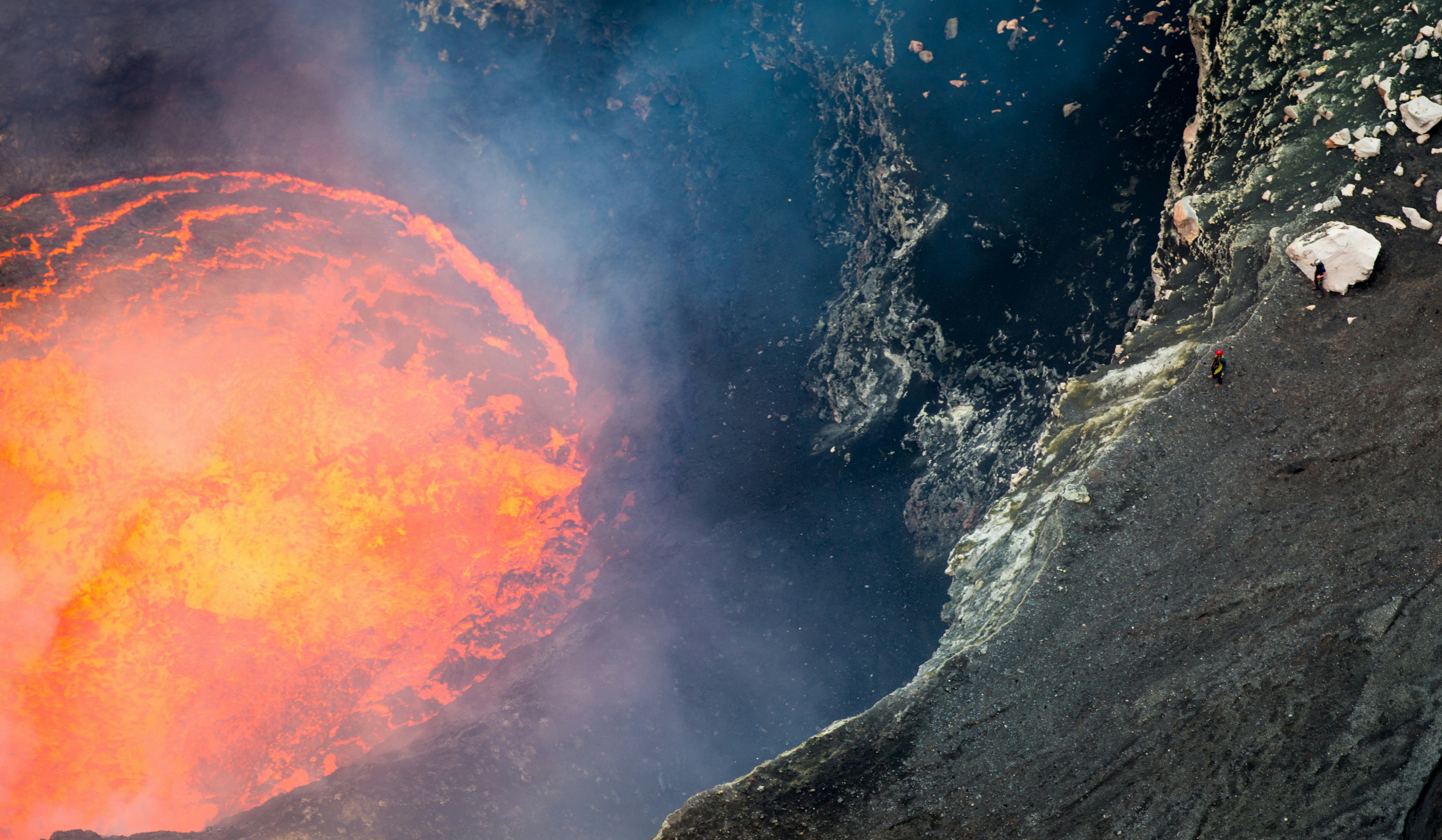
4. Ambrym
Best island for hiking
Tanna’s Mt Yasur volcano might be the country’s most visited, but it’s far from the only active crater dotting the archipelago. An hour flight north of Port Vila, Ambrym snatches pole position for its volcanoes with multiple craters. While some craters have not been active for decades, Benbow and Mbwelesu Craters are the site of regular lava lakes.
Unlike the accessible Yasur, trekking the Ambrym volcanoes – hailed as two of the world’s most active – requires effort. You’ll be climbing some 1160m (3086ft) to Mt Benbow and 1270m (4167ft) to Mt Marum in the middle of the island. While it’s a bit of work (bring your walking poles), it’s considered safe to make these treks. After your climb, celebrate with a couple of shells of kava, a ceremonial drink that acts as a relaxant. (Be careful not to overindulge; Vanuatu's kava is particularly potent with more active ingredients than you'll find in Fiji's kava.)
Due to its volcanic activity, you won’t find white sandy beaches on this island but the snorkeling, like in most of the country, is sublime. Choose a local accredited guide who has undergone extensive training and who holds a First Aid certificate. Staff at the tourist bungalows may be able to make suggestions.
Planning tip: Compared to Efate, Santo and Tanna, tourism is less developed on Ambrym, Malekula and Pentecost (see below). Visitors must be comfortable with getting back to basics, with accommodation largely limited to basic guesthouses with outhouses and bucket showers. Running water and electricity is not guaranteed.
5. Malekula
Best place to see dugongs
Despite their considerable size, dugongs can be notoriously elusive to spot around the world. Not so in Vanuatu, which offers some of the best chances to encounter a considerable number of these “sea cows.” Head to southern Malekula (a 45-minute flight north from Port Vila to Lamap), part of the Maskeylnes archipelago, renowned for its healthy seagrass on which these marine mammals love to feast.
Long-time tour operator Vanuatu Ecotours, which employs local guides, offers a Maskeylnes Discovery tour of 4 days/3 nights and, while there are no guarantees, it is rare not to spot dugongs, sometimes with as many as 20 in a school. Should you encounter a dugong in the water, whether as part of a tour or on your own, follow the guidance from the Vanuatu Environmental Science Society and give the creature plenty of space.
Planning tip: To increase your chances of a dugong sighting, go to Vanuatu during its winter season from June to August and head out at high tide.
6. Pentecost
Best place to see a daring ancient tradition
Come here to see bungee jumping, but probably not as you know it. Proving that the ni-Vanuatu people possess both creativity and courage, Pentecost Island has become renowned for its most unbelievable tradition: naghol or land diving.
Held to celebrate the start of yam season when the vines are strongest, the tradition is considered a rite of passage for men. As the story has it, a woman was chased up a coconut tree by her husband and both jumped. The woman tied vines to her legs and survived the jump. The man did not.
Today, men leap as far as 30m (98ft) from a tower with vines tied to their ankles. Visit Pentecost on a Saturday between April and June to witness the incredible land diving spectacle.
Planning tip: It’s possible to travel independently to Pentecost, but it’s far easier to book a trip with an accredited tour operator, ensuring that the traditional land owners are paid the appropriate fees. Operators such as Intrepid Travel offer tours, typically departing from Efate or Santo.
Supported by Vanuatu Tourism Office
As a travel entertainment and inspirational media outlet, we sometimes incorporate brand sponsors into our efforts. This activity is clearly labeled across our platforms.
Funding for this story is provided by Vanuatu Tourism Office. All editorial views are those of Lonely Planet alone and reflect our policy of editorial independence and impartiality.
With sponsored content, both Lonely Planet and our brand partners have specific responsibilities:
-
Brand partner
Only provides financial support and their logo. Doesn't make revisions or approve the story.
-
Lonely Planet
We fully control the creative and editorial approach, just like any other featured story.







